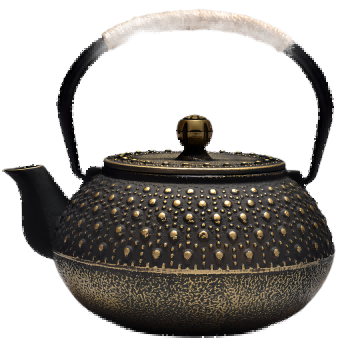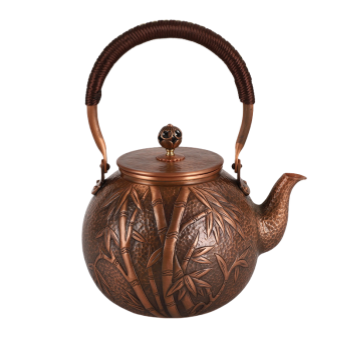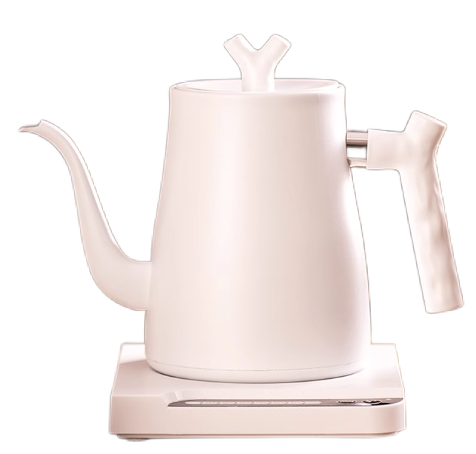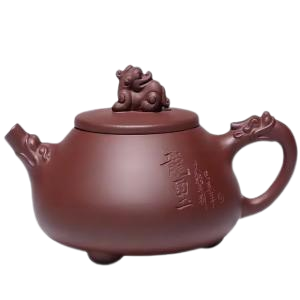Five Possibilities Why Your Tea Smells Good But Taste Not
Introduction
If you’ve ever wondered why some tea smells amazing but doesn’t taste as good, then you will find the answer in this article. For some customers, if you find your tea smelling good but not tasting good, you might feel puzzled, leaving you wondering why the enticing fragrance doesn’t translate into an equally delightful taste. In this article, we’ll delve into the various factors that contribute to this phenomenon, exploring the subtle intricacies of tea quality, water composition, and even the choice of tea ware. Whether you’re a seasoned tea drinker or a curious newcomer, understanding these elements will enhance your appreciation of this ancient beverage and help you unlock the full potential of your next cup of tea.
If you find that your tea smells good but not taste good, here are the most possible reasons
Possibility 1: Issue with the Quality of the Tea
The quality of the tea is perhaps the most critical factor when it comes to the disparity between a tea’s aroma and its flavor. Both the fragrance and taste of tea are derived from the aromatic compounds naturally present in the tea leaves. These compounds are predominantly fat-soluble, meaning that only a small fraction dissolves in the tea liquor during brewing, while the majority remains suspended within the liquid. When you take a sip, these aromatic compounds are released, creating the delightful burst of flavor known as “entrance fragrance.” However, the nature of these compounds also makes them incredibly volatile; they are primarily adsorbed on the surface of the dry leaves, which makes them prone to evaporation and loss, especially if the tea is not stored properly. Proper storage is crucial to preserving these delicate compounds—tea should be kept in a sealed, cool, and odor-free environment to maintain its aromatic integrity.
If you find that your tea smells wonderful but tastes lackluster, it might be due to a couple of quality-related issues. Firstly, the tea leaves may not have developed sufficient internal quality during their growth and processing, meaning the entrance fragrance, while initially present, doesn’t carry through to the taste. This can occur if the tea plants were not grown under optimal conditions, or if the leaves were harvested too early or late. Secondly, the problem could stem from the processing stage. Tea processing is a delicate art, and any misstep—such as over-wilting, over-fermentation, or improper drying—can lead to a tea that smells great but fails to deliver on flavor. These errors can disrupt the balance of aromatic compounds, leading to a flat, disappointing taste. In such cases, it’s often best to avoid consuming that tea, as it likely won’t provide the satisfying experience you’re seeking
Possibility 2: Issue with the Quality of Your Water
Water quality is a critical yet often overlooked factor that can dramatically influence the taste of your tea. Even the finest tea leaves can be rendered unremarkable if brewed with poor-quality water. Experienced tea drinkers know that when a familiar tea suddenly smells wonderful but tastes off, the water is usually the first place to investigate. There are several aspects of water quality that can directly impact the flavor profile of your tea.
First, the mineral content of the water plays a significant role. Hard water, which is water that contains a high concentration of minerals like calcium and magnesium, can interfere with the delicate balance of flavors in tea. These minerals tend to bind with the aromatic compounds in the tea, reducing its overall fragrance and leaving you with a cup that tastes flat or even metallic. Tap water and certain types of mineral water are common culprits here, especially in areas where the water is naturally hard. To avoid this, it’s advisable to use filtered or soft water, which has a lower mineral content, allowing the tea’s natural flavors to shine through.
Second, it’s important to consider the freshness of the water you’re using. Many people are unaware that water can indeed go bad. Bottled water, for instance, can become stale or even develop microbial growth if it has been left open for too long. This not only dulls the tea’s aroma but can also introduce off-flavors that detract from the overall experience. Even if the water doesn’t appear or smell off, these subtle changes can significantly alter the taste of your tea. Always use fresh water for brewing, and if you’re using bottled water, make sure it’s sealed and hasn’t been sitting around for an extended period.
Third, the cleanliness of your brewing equipment is another crucial factor. Kettles, water dispensers, and even teapots that haven’t been cleaned properly can develop odors or harbor microbes, both of which can ruin a good cup of tea. Over time, mineral deposits and other residues can accumulate, leading to unwanted flavors that are imparted to the water and, consequently, to the tea. If you’ve been using the same water source but notice that your tea’s taste has changed, it might be time to thoroughly clean your kettle and other brewing equipment. Regular maintenance, such as descaling your kettle and ensuring that your water dispenser is free from contaminants, can go a long way in preserving the purity of your tea.
Possibility 3: Issue with Your Teaware
The choice of tea ware can also significantly influence the aromatic and flavor profile of your tea. Certain materials, particularly porous ones like clay or unglazed ceramic, have the ability to absorb and retain aromas over time. While this characteristic can be beneficial in some contexts—such as when dedicated tea pots are used exclusively for specific types of tea to enhance their flavor—it can also have a downside. If you’re using tea ware that has absorbed the aromas of previous brews, it might unintentionally alter the fragrance and taste of your current tea, especially if you are brewing a more delicate variety.
This absorption effect is particularly noticeable with teas that have subtle aromas and flavors, such as yellow, white, or some red teas. These teas rely on their delicate balance of aromatic compounds to deliver their full sensory experience. When brewed in tea ware that has absorbed stronger or different aromas from previous uses, the subtle notes of these teas can be overshadowed or diluted, resulting in a cup that smells enticing but tastes lackluster. The more porous the material, the greater its capacity to absorb and retain these aromatic compounds, making it a potential culprit if your tea isn’t delivering the expected flavor.
It’s also worth noting that over time, tea ware made of porous materials can develop a build-up of these absorbed aromas, creating a kind of “scent memory” that can interfere with the purity of each new brew. This is why some tea connoisseurs prefer to use separate tea pots for different types of tea or opt for non-porous materials like glass or stainless steel, which do not retain previous scents and allow each tea to express its unique aroma and flavor fully.
Shop Best and Safe Teapots
Possibility 4: Artificial Fragrance Included
Another important factor to consider when your tea smells wonderful but tastes underwhelming is the possible use of artificial fragrances. Some tea producers, in an attempt to make their products more appealing, add synthetic fragrances to enhance the aroma of the tea. These artificial additives are designed to mimic the natural scents of high-quality tea, creating an enticing smell that can easily mislead you into thinking the tea is of superior quality. However, these artificial enhancements often fail to translate into a matching flavor, leading to a disappointing drinking experience.
Teas that have been artificially fragranced are usually easy to identify once you know what to look for. One telltale sign is when the aroma of the dry leaves is overly strong and somewhat one-dimensional, lacking the complexity that natural teas exhibit. When brewed, these teas might smell inviting but reveal their true nature in the taste—often coming across as weak, flat, or even bitter. The disconnect between the strong fragrance and the lackluster flavor is a clear indicator that the tea has been artificially enhanced. Unlike naturally aromatic teas, which offer a harmonious balance of scent and taste, artificially fragranced teas can feel disjointed and unsatisfying.
In addition to the unpleasant taste, there are also potential health concerns with consuming teas that contain synthetic additives. While these additives are generally considered safe in regulated amounts, they may not provide the same health benefits as naturally aromatic teas, which contain a complex array of natural compounds that contribute to both flavor and wellness. Furthermore, regular consumption of artificially fragranced teas might dull your palate over time, making it harder to appreciate the subtle nuances of high-quality, natural teas.
Possibility 5: Oversteeping Issue
Another factor that can lead to a discrepancy between the aroma and flavor of your tea is the steeping time. While it’s less common compared to other issues, over-steeping your tea can significantly impact its aromatic and flavor profile. When tea is left to steep for too long, especially in hot water, the delicate aromatic compounds that contribute to its fragrance begin to break down. These compounds are inherently unstable and are most vibrant when the tea is freshly brewed. As the tea cools down, these volatile compounds start to dissipate, resulting in a noticeable decline in aroma. What was once a fragrant cup of tea can quickly become muted and lackluster.
The issue is further compounded by the fact that over-steeping can also affect the taste of the tea. As the tea sits and the aromatic compounds fade, the remaining flavors become more prominent, which can sometimes highlight any bitterness or astringency present in the leaves. This can lead to a cup that not only smells weaker but also tastes less pleasant than it should. The balance of flavor that you expect from a well-brewed tea is disrupted, making the tea taste flat or overly bitter, depending on the type of tea and the duration of steeping.
This problem is particularly relevant for delicate teas like green, white, or lightly oxidized oolongs, which require careful attention to both temperature and steeping time. These teas are best enjoyed when brewed briefly at lower temperatures, which helps to preserve their subtle aromatic qualities. However, even robust teas like black or pu-erh can suffer from over-steeping, though they might become overly strong or tannic rather than losing aroma.
If you find that your tea has lost its initial fragrance and flavor after sitting too long, it’s important to note that this is a common issue and doesn’t necessarily reflect the quality of the tea itself. Rather, it’s a reminder of the importance of timing when brewing tea. To avoid this, try to enjoy your tea shortly after brewing, while the aromatic compounds are still fresh and vibrant. If you do find yourself with an over-steeped cup, consider shortening the steeping time for your next brew to ensure a more balanced and aromatic experience
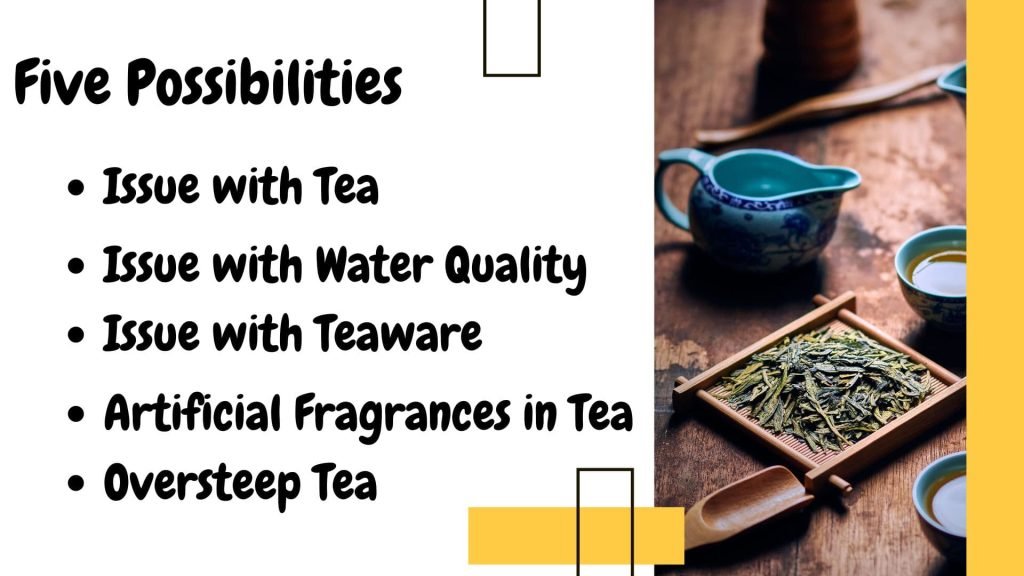
Conclusion
In conclusion, the gap between the enticing aroma and the disappointing taste of some teas can often be traced back to various factors such as tea quality, water purity, tea ware, the presence of artificial fragrances, and even steeping time. Understanding these elements can help you avoid common pitfalls and enhance your overall tea experience. By selecting high-quality teas, using clean, fresh water, and paying attention to your brewing methods, you can ensure that the flavor of your tea matches its delightful scent, leading to a more satisfying and enjoyable cup every time


